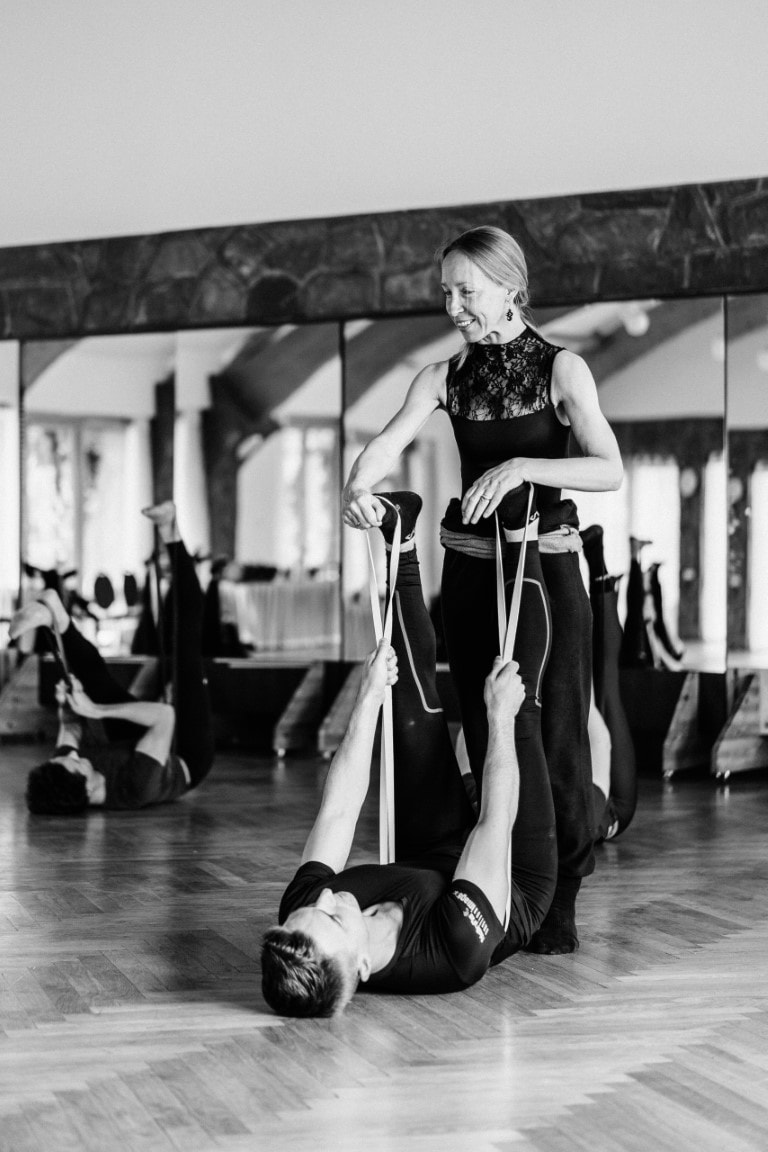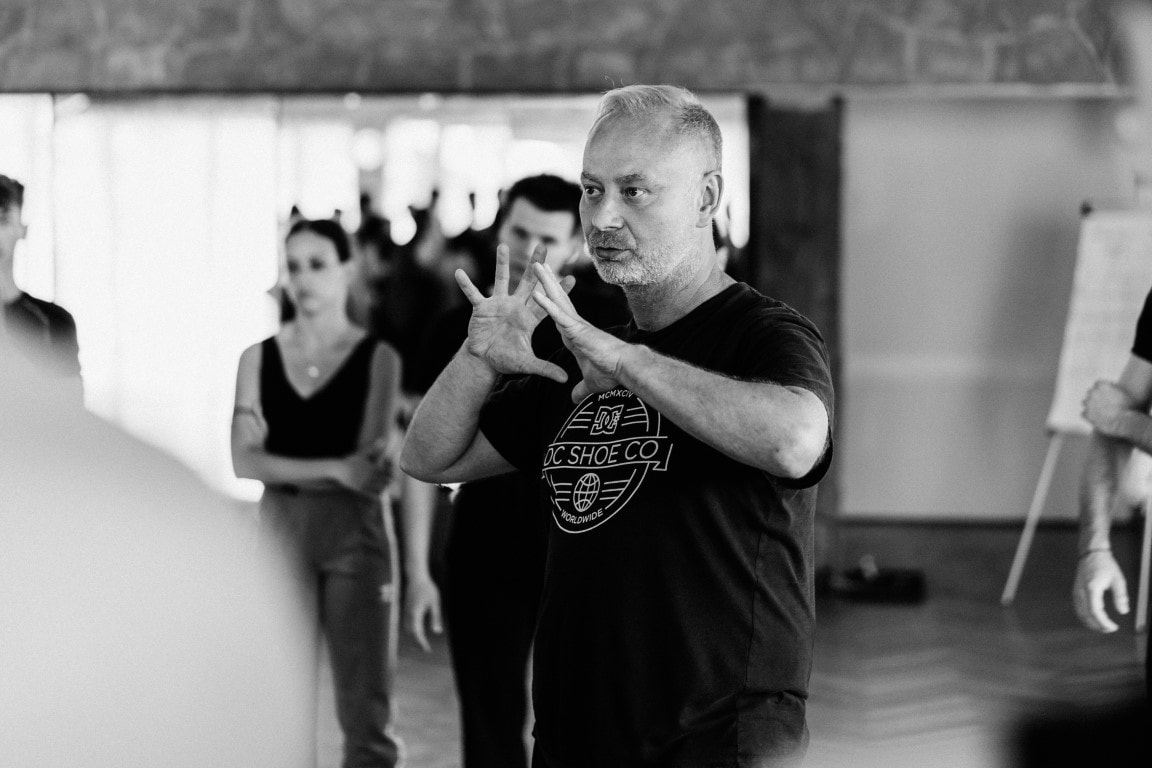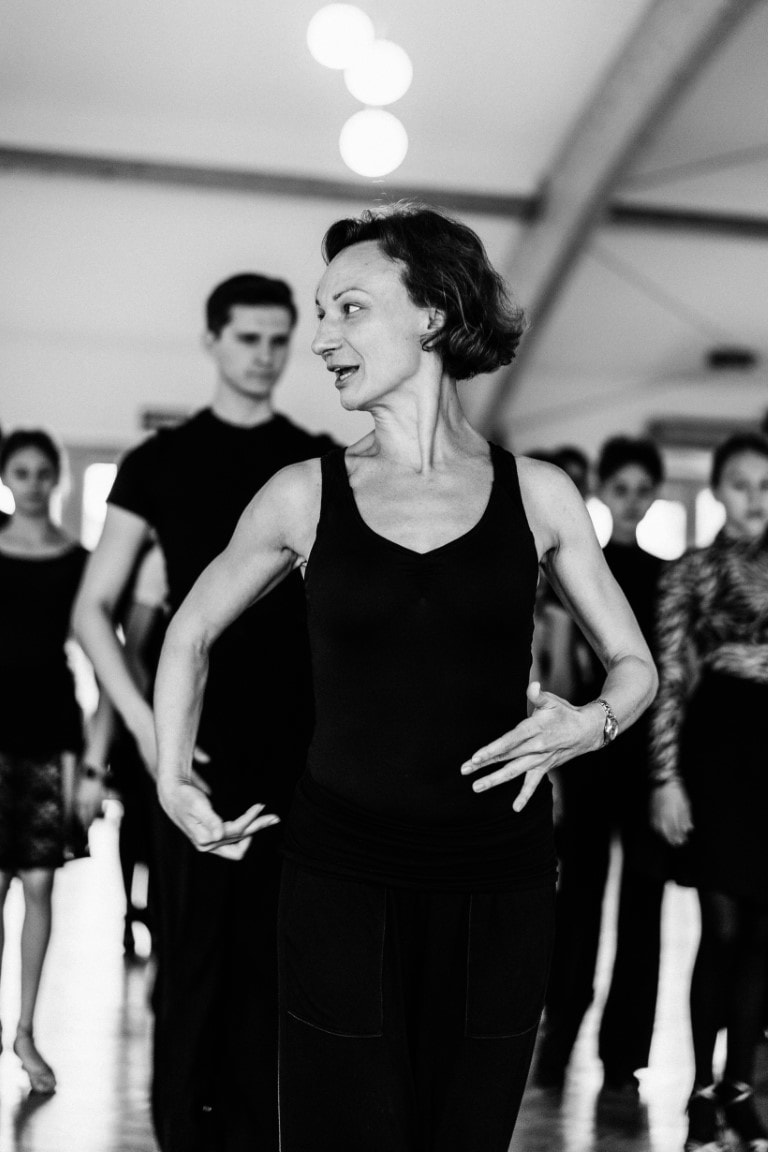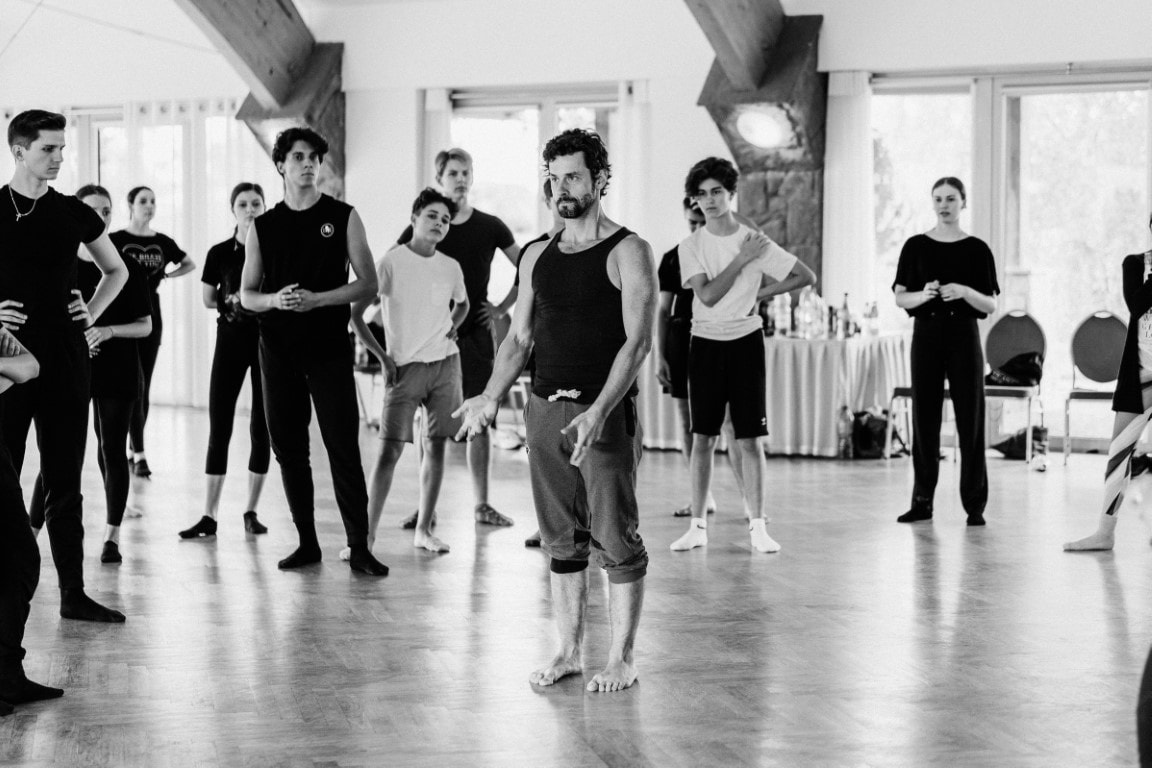On 19-25 July 2020, forty eight dancers got together at Borek Active Recreation Center to take part in a week-long training camp.
They decided to trust me again, but there were a few new faces as well. I have been organising my training camps since 2010. Each of them is a special, one-of-a-kind experience, and I always wonder what the next one will bring. The workshop is joined by the next generation of dancers. Those who enrolled when I just began have now retired from their sports careers - and have started their families, become instructors themselves, or launched their own businesses. I remain in touch with most of them, still playing a part in their lives regardless of the path they have chosen for themselves. We’ve had many unforgettable moments together, some of which have taken place during the training camps.
The theme of this summer’s training camp was: “Conscious Connection” Every training camp I organise has a theme which our thoughts focus on during the entire event. The theme comes to me most often spontaneously - usually about two weeks before the training camp begins, when I just start designing the programme. My process is to sit, listen to my heart, and wait for what comes next. I really like this moment. I like waiting for what I’m going to write down on paper eventually. This year I didn’t have too much creative inspiration - or so I thought when I was writing down the words “conscious connection”. I couldn’t have been more wrong!
And I realised it only after the training camp finished, when I became aware how the theme I had come up with moved the hearts, the minds, and the bodies of the participating dancers. I think that the COVID-19 pandemic played a big part there. The world came to a halt - and so did we. What we gained was time and space to look at what was going on both inside of us and around us. I made the decision to run the July training camp in mid-May, when it was clear that it would be possible to organise such events in the summer. What motivated me to do it was the words of encouragement I got from my dancers, who spent months at home and simply missed being around other dancers and ballroom training sessions, interacting with other couples.
And I realised it only after the training camp finished, when I became aware how the theme I had come up with moved the hearts, the minds, and the bodies of the participating dancers. I think that the COVID-19 pandemic played a big part there. The world came to a halt - and so did we. What we gained was time and space to look at what was going on both inside of us and around us. I made the decision to run the July training camp in mid-May, when it was clear that it would be possible to organise such events in the summer. What motivated me to do it was the words of encouragement I got from my dancers, who spent months at home and simply missed being around other dancers and ballroom training sessions, interacting with other couples.

I was strongly drawn to the word “conscious”, and it turned out to be a very broad subject. When I was preparing for classes, I decided not overcomplicate the concept of “consciousness” and see what it would result in. The theme appeared to have had a strong impact on the group. I think it was also because of the fact that the prospect of the nearest dance competition was still under a question mark. Dancers didn’t feel the pressure to compete, they gave themselves the time and space to look closer at themselves and the world around.
As Carl Gustav Jung said, there’s no coming to consciousness without pain. The process we went through at the training camp was different for each participant - just like consciousness, which is an intimate, individual experience of reality.
The word “consciousness” comes from Latin: “con” (with) and “scientia” (knowledge). It can be assumed that consciousness is knowledge each person shares with themselves. Science has still not arrived at a uniform definition of consciousness. After all, science is objective, and consciousness is subjective. Generally speaking, consciousness is a state when an individual is aware of what is happening inside of them and of what is going on around them. Some elements typical of consciousness include thinking in terms of “ME”, “I”, “OTHERS”, sensing, feeling, and the ability to make analyses and choices. It needs to be said that “consciousness” can be an umbrella term for many meanings, concepts, and ideas.
As Carl Gustav Jung said, there’s no coming to consciousness without pain. The process we went through at the training camp was different for each participant - just like consciousness, which is an intimate, individual experience of reality.
The word “consciousness” comes from Latin: “con” (with) and “scientia” (knowledge). It can be assumed that consciousness is knowledge each person shares with themselves. Science has still not arrived at a uniform definition of consciousness. After all, science is objective, and consciousness is subjective. Generally speaking, consciousness is a state when an individual is aware of what is happening inside of them and of what is going on around them. Some elements typical of consciousness include thinking in terms of “ME”, “I”, “OTHERS”, sensing, feeling, and the ability to make analyses and choices. It needs to be said that “consciousness” can be an umbrella term for many meanings, concepts, and ideas.

The body and its movement are a means of expression in dancing. But it is specifically consciousness that makes this movement carry some meaning and value, becoming purposeful and full of expression.
When the training camp started, I gave my dancers notebooks and pens. Their task was to note down everything they noticed, experienced, felt happening inside and around them for the entire week. According to Buddhism, consciousness is a space where all experiences emerge - hence my inspiration. The dancers made notes not only of the content of the classes but also of the thoughts that came to them - their impressions and reactions. When the training camp was coming to an end, they shared their thoughts on the matter of consciousness using the notes they had made. Some decided to give a speech, some went for a short drama, and some offered a dance show.
Each of the instructors addressed the subject of consciousness individually. My goal was to get my students to become consciously connected with their bodies, with this connection understood as a fusion of two domains: the physical and the spiritual. The physical body is the attire of the soul. I wanted to make dancers form a deeper bond with what they felt and experienced within, in both the physical and the spiritual domain. I drew my students’ attention to the movement of the spine and the energy centres of the body. The exercises we performed intended to activate the spine in a conscious manner - from the tailbone to the skull. This results in flexible movement and a free flow of energy through the body. The “open spine” position offers a sense of space inside the body. A flexible spine makes it also possible to fill musical space with movement. To me, dancing is mainly about movement filling the musical space, about motion between the structures coming one after another. Understanding and feeling how this movement takes place in the entire body - from head to toe, with a particular focus on the pelvis and the chest - was the essence of my work during this training camp.
When the training camp started, I gave my dancers notebooks and pens. Their task was to note down everything they noticed, experienced, felt happening inside and around them for the entire week. According to Buddhism, consciousness is a space where all experiences emerge - hence my inspiration. The dancers made notes not only of the content of the classes but also of the thoughts that came to them - their impressions and reactions. When the training camp was coming to an end, they shared their thoughts on the matter of consciousness using the notes they had made. Some decided to give a speech, some went for a short drama, and some offered a dance show.
Each of the instructors addressed the subject of consciousness individually. My goal was to get my students to become consciously connected with their bodies, with this connection understood as a fusion of two domains: the physical and the spiritual. The physical body is the attire of the soul. I wanted to make dancers form a deeper bond with what they felt and experienced within, in both the physical and the spiritual domain. I drew my students’ attention to the movement of the spine and the energy centres of the body. The exercises we performed intended to activate the spine in a conscious manner - from the tailbone to the skull. This results in flexible movement and a free flow of energy through the body. The “open spine” position offers a sense of space inside the body. A flexible spine makes it also possible to fill musical space with movement. To me, dancing is mainly about movement filling the musical space, about motion between the structures coming one after another. Understanding and feeling how this movement takes place in the entire body - from head to toe, with a particular focus on the pelvis and the chest - was the essence of my work during this training camp.

The classes in artistic expression involved the dancers working on the mental aspect of their being. They were searching for an answer to the question: “Who am I?”, asking themselves also the following: “Who am I talking to?” and “What for?”. Improvisation sessions were about following one’s intuition and the movement flowing straight from one’s heart - not from one’s intellect. Class participants were becoming familiar with their own unique styles of movement, with the way how the felt and experienced their bodies in the surrounding space and around others.
I believe that in order to understand the world as it is in its entirety, we need to be able to place ourselves in it.
I get my energy not only from dancing but also from being close to nature. I wish to make dancers more sensitive and communicate them not only with themselves but also with the world around them - that’s why our morning classes took place outdoors. The venue of the training camp is located away from the urban hustle and bustle, surrounded by nature. The classes involved mainly working on one’s breathing, which is something that ties us to the here and now. Another activity was barefoot walking. Dancers were familiarising themselves with what they found under their feet or within their sight. They were asked to pay close attention to the smell, the structure, and the form of what surrounded them.
Consciousness is realising that we simply are; it is an experience of oneself and of life. It depends on us and on the sum of our experiences. It is an intimate kind of knowledge, available only to the experiencer.
I believe that in order to understand the world as it is in its entirety, we need to be able to place ourselves in it.
I get my energy not only from dancing but also from being close to nature. I wish to make dancers more sensitive and communicate them not only with themselves but also with the world around them - that’s why our morning classes took place outdoors. The venue of the training camp is located away from the urban hustle and bustle, surrounded by nature. The classes involved mainly working on one’s breathing, which is something that ties us to the here and now. Another activity was barefoot walking. Dancers were familiarising themselves with what they found under their feet or within their sight. They were asked to pay close attention to the smell, the structure, and the form of what surrounded them.
Consciousness is realising that we simply are; it is an experience of oneself and of life. It depends on us and on the sum of our experiences. It is an intimate kind of knowledge, available only to the experiencer.

What did we learn during the training camp?
Each participant has a different answer to this question. When the training camp was close to an end, one participant even said he considered him not conscious, which meant he became aware of that after all. His gradual process of realisation had started.
I, in turn, became even more aware of how the world affected me - but also of how I affected the world.
And while the process of realisation can be painful, I encourage everyone to broaden their consciousness as it makes us more sensitive and stimulates our sense of empathy. Becoming more and more conscious lets one get to know the desires of one’s soul and support them in a wise way.
I can only wonder what the theme of the next training camp will be… :)
Each participant has a different answer to this question. When the training camp was close to an end, one participant even said he considered him not conscious, which meant he became aware of that after all. His gradual process of realisation had started.
I, in turn, became even more aware of how the world affected me - but also of how I affected the world.
And while the process of realisation can be painful, I encourage everyone to broaden their consciousness as it makes us more sensitive and stimulates our sense of empathy. Becoming more and more conscious lets one get to know the desires of one’s soul and support them in a wise way.
I can only wonder what the theme of the next training camp will be… :)